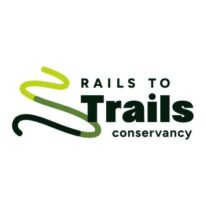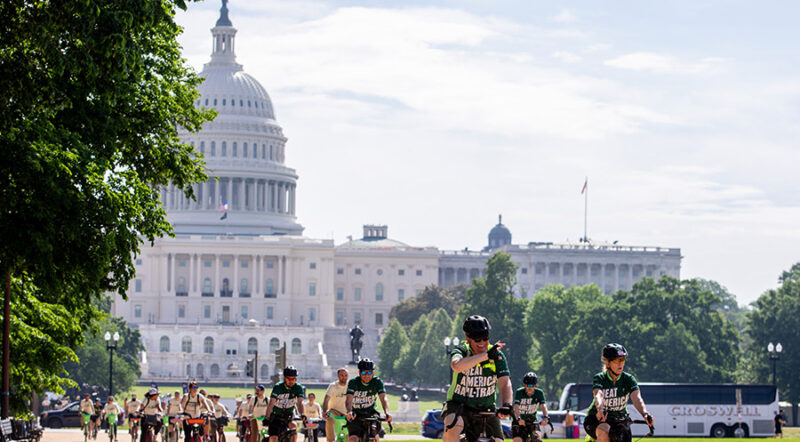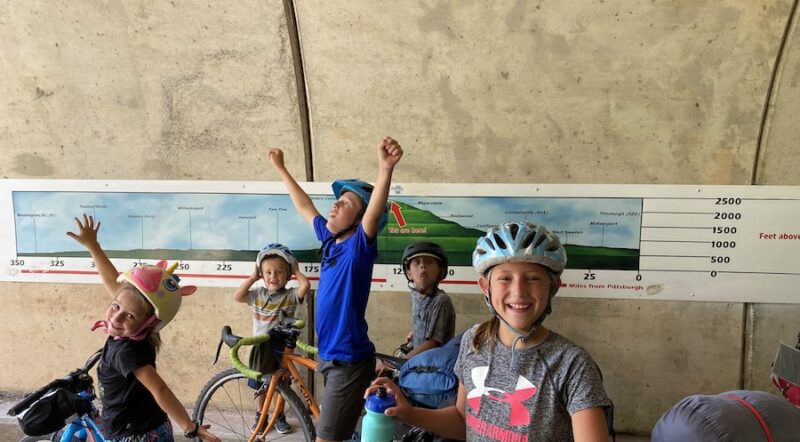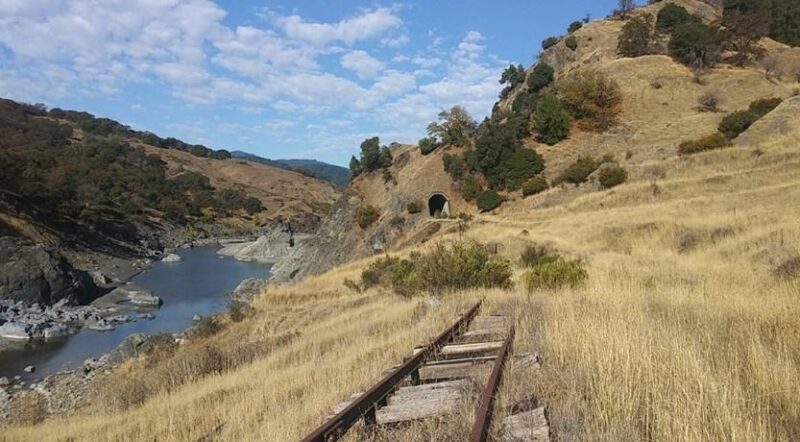New Research Finds Public Investment in Trails, Walking and Biking Infrastructure Delivers Potential Economic Benefits of $138.5 Billion Annually
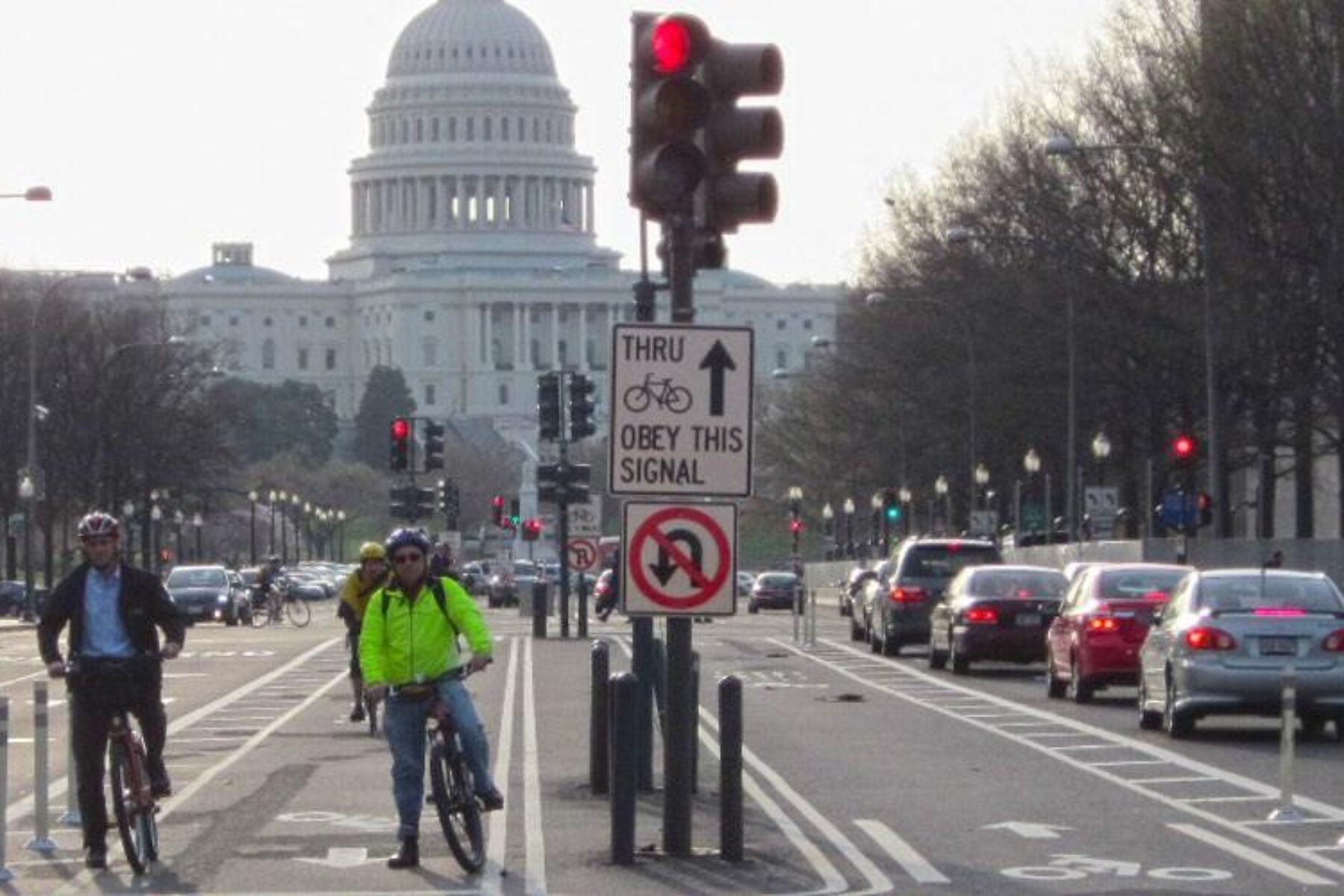
FOR IMMEDIATE RELEASE:
October 15, 2019
CONTACT:
Patricia Brooks, Patricia@matchmapmedia.com, 202.351.1757
New Research Finds Public Investment in Trails, Walking and Biking Infrastructure Delivers Potential Economic Benefits of $138.5 Billion Annually
Rails-to-Trails Conservancy’s newest study, “Active Transportation Transforms America,” provides nation’s most comprehensive analysis of the quantifiable health, climate, mobility and economic impacts of public investments in trails, walking and biking
WASHINGTON—Rails-to-Trails Conservancy (RTC) today released findings from “Active Transportation Transforms America,” the nation’s most comprehensive analysis of the quantifiable impact of trails, walking and biking on the places we live.
The study, which aggregated data about the health cost savings, climate protection, mobility and direct economic value of trails and active transportation, found that currently active transportation infrastructure contributes more than $34.1 billion to the U.S. economy annually. As infrastructure connectivity improves, the economic contribution of active transportation infrastructure has the potential to be more than $138.5 billion each year, a return that’s nearly seven times greater every year than the cumulative investment of $20 billion that’s been made in trails and walking and biking projects via federal programs over the past three decades.
“The findings of Active Transportation Transforms America are motivating,” said Kevin Mills, RTC’s vice president of policy. “RTC first analyzed the potential economic benefits of trails, walking and biking more than 10 years ago, and while those numbers were promising, we didn’t have the data or the methodology to truly understand the economics of trails at a national scale. Now we can prove what we’ve always known. Connecting trails and walking and biking infrastructure can change our communities—urban, suburban and rural—for the better. And as the connectivity of trail networks improves, so does the health of people and places.”
RTC released its findings during a webinar today, where Mills was joined by Leslie Richards, secretary of the Pennsylvania Department of Transportation; Martha Williams, director of Montana Fish, Wildlife and Parks; and Jim Kolb, partner at Summit Strategies. The panel addressed issues of transportation reform, provided examples of effective state and local implementation, and explored key report findings that outline the transformative power of connected trail and active transportation networks.
During the webinar, RTC demonstrated the discrepancies between demand for active transportation infrastructure and investments made. The majority of trips taken in this country are within a 20-minute bike ride or less, more than one in four trips are within a 20-minute walk or less, and 11.5% of all trips are made by walking and biking. Yet, current federal transportation policy only invests less than 2% of funds in bicycle and pedestrian projects. At the same time, bicyclist and pedestrian injuries and fatalities are skyrocketing while other vehicle-related fatalities are on the decline. RTC’s report and the findings come as Congress takes up debate to reauthorize the nation’s federal transportation bill, a critical juncture that will define federal spending on active transportation for years to come.
“The time is now for Congress to be bold to pass a transformative transportation bill that invests in a balanced system that meets America’s evolving transportation needs,” said Mills. “We have the evidence that demonstrates how essential active transportation can be to our communities, but we’ll only realize that potential when we treat trail and active transportation networks as necessary components of our transportation system.”
Key findings from the report that provide quantitative evidence underscoring the value that active transportation delivers and the power of every dollar invested in active transportation infrastructure include:
- Return on investment (ROI): The current ROI of active transportation infrastructure, which accounts for fuel savings, CO2 reduction, net spending impact of rail-trails and health cost savings, is $34.1 billion annually and has the potential to grow to $138.5 billion annually.
- Mode shift and environmental benefits: The value of fuel savings from shifting short car trips to walking and bicycling trips, using walking and bicycling to access public transit, inducing mixed use, and reducing congestion is currently $3.3 billion annually, which could increase to nearly $22 billion annually. The amount of CO2 saved annually could grow from 13 million tons to 54 million tons annually.
- Calculations of economic impact: The total local spending impact of the nation’s 2,218 rail-trails is $10.6 billion annually, which could grow to as much as $21 billion annually.
- Health cost savings: Health cost savings from increased physical activity due to active transportation is currently $20 billion annually and could grow to nearly $92 billion annually.
According to RTC, focused public investment in connecting active transportation infrastructure is key to realizing the most substantial benefits for the nation. RTC is calling on Congress to double active transportation funding by growing Transportation Alternatives and curbing transfers so that meaningful opportunities are provided in all states to develop safe places to walk and bike; tripling funding for the Recreational Trails Program, the only federal funding source that supports trail maintenance, to reflect recreational fuel taxes and ensure good repair as trails age; and establishing focused funding for connectivity that invests in active transportation networks—which ensure that people can safely travel within their communities, and between residences and routine destinations such as jobs, schools, commercial centers and transit—and spine trails, which connect between communities and states.
Download the “Active Transportation Transforms America” report and learn more about RTC’s efforts to inspire a visionary transportation reauthorization bill at railstotrails.org/trailstransform. Follow the commentary on social media using the hashtag #TrailsTransform.
Rails-to-Trails Conservancy is the nation’s largest trails organization—with a grassroots community more than 1 million strong—dedicated to connecting people and communities by creating a nationwide network of public trails, many from former rail lines. Connect with RTC at railstotrails.org and @railstotrails on Facebook, Twitter and Instagram.

Donate
Everyone deserves access to safe ways to walk, bike, and be active outdoors.
